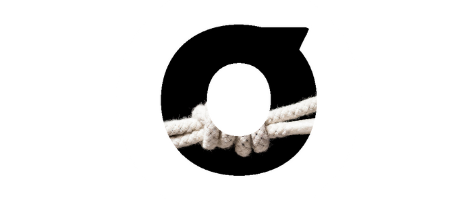
TRUST AND INFORMATION SHARING
Interview with Vincenzo Perrone

He is an expert in strategy and organisational behaviour. Full Professor of Strategic Management and Organisation at Bocconi University. Previously Pro-Rector for Research, Director of the Institute of Organisation & Information Systems and SDA Bocconi Organisation & Human Resource Management Dep.
How would you define TRUST in an organisational context? Is it true that trust is free?
A brief definition of trust might be: To trust is to decide to place something of value in someone else’s hands, accepting the risk involved.
This “something” could be money, reputation or even a brilliant idea.
In practice, trust is the attitude that drives us to take action with another person, believing (or “reasonably hoping”) that their intentions and behaviour towards us will be positive.
It’s like asking a friend to keep an important secret: by asking, we expose ourselves to the risk that they might reveal it, since we can’t control them directly.
Without trust in others, our lives would become an endless process of monitoring and checking, leading to enormous costs and paralysis.
There’s a common belief that trust is “free”.
In reality, building and maintaining trust takes time, effort, trial and error – and, in more sensitive cases, institutions and agreements to ensure reliability.
Consider how long it takes to trust a new colleague with an important project. Before we feel fully comfortable, we observe whether they keep their promises, demonstrate competence, and – crucially – care about our well-being and that of the group as much as their own.
Three basic expectations serve as pillars of trust: PREDICTABILITY, RELIABILITY and FAIRNESS.
Like a bridge, if one pillar fails, the whole structure collapses. Even a small misstep can undermine the relationship.
If our “secret-keeper” friend proves untrustworthy once, we’ll find it hard to trust him again. The same goes for a business partner who may be competent but lacks honesty.
In everyday reality, building trust often reduces the COST OF CONTROL.
Where there’s trust, there’s no need for security cameras, bosses monitoring every employee move or long and complex contracts.
The most innovative companies have recognised that investing in an ORGANISATIONAL ENVIRONMENT where everyone can rely on colleagues and superiors creates smoother processes, fosters creativity and improves results.
Some Japanese industrial companies, for example, have such a strong organisational culture that people willingly work extra hours in emergencies, knowing that others will reciprocate in the future.
But this doesn’t happen overnight, nor is it “free” – it takes time, strategic management decisions and, above all, real attention to relationships.
What moments in organisational life represent a CHALLENGE for trust?
SHAKE-UPS—whether mergers, crises, or simply the arrival of a new leader—always test trust.
Consider a giant created by the merger of several entities, such as Stellantis: many employees wonder whether the new leadership will honour promises, respect the company’s legacy, or focus solely on cost-cutting at the expense of people.
Or think of a company facing the unexpected resignation of its CEO.
In these moments, UNCERTAINTY grows and trust can waver as everything seems unpredictable.
What can be done to address them?
First, focus on initial STATEMENTS and firts ACTIONS.
It’s like joining a new group: if we say “I want to work with you all equally” but then behave authoritatively, consistency breaks down and so does credibility.
Second, it’s essential to explain calmly and transparently THE WHY BEHIND EVERY DECISION, budget cut or new strategy.
If we remove a benefit without adequate justification, those affected will feel betrayed.
Take a pharmaceutical company restructuring its production to meet European regulations, where some jobs may be replaced by robots. If management simply says, “This will save us money,” employees won’t understand and will feel abandoned.
But if the company holds open meetings, explains that the restructuring is necessary to continue selling abroad, and commits to retraining vulnerable workers, distrust can be reduced. Someone might even suggest more effective ways of using robots without necessarily ‘getting rid’ of too many people.
The third crucial aspect is FAIRNESS.
If we are not prepared to share the sacrifice fairly, if we don’t set an example in asking others to give up something, we send a devastating signal.
A historical example is Winston Churchill during the Second World War, who asked his citizens to make immense sacrifices, but shared in those sacrifices and always spoke in the first person plural.
This is how TEAM SPIRIT is built, especially when the waters get rough and everyone might be tempted to row in their own direction.
During the Covid era, more transparent and consistently honest communication from those managing containment measures might have prevented much of the current distrust of scientists, institutions and politicians.
Being treated as informed adults, rather than as children receiving unexplained instructions, fosters responsibility, commitment and ultimately trust.
The link between trust and KNOWLEDGE SHARING seems intuitive. What other elements influence the flow of information at different levels (team, organisation, networks), and what practices can we put in place to encourage it?
It’s often said that “he who has information has POWER”. Today, in the digital age, with data at the heart of everything from online marketing to geopolitics, this has never been more true.
Yet those who hold information are often reluctant to share it for fear of losing competitive advantage, financial rewards or professional recognition.
TRUST acts as a counterbalance.
If I trust my counterpart and believe that sharing my knowledge will lead to better outcomes – such as more fruitful collaboration or even better ideas we can develop together – I’m more likely to open up.
A major barrier to sharing in organisations is INCOME AND RECOGNITION.
If I’m only rewarded for individual achievements, why share information that could benefit others? It’s natural to prefer to work alone. But when companies reward collaboration and share project results among contributing team members, everyone becomes invested in sharing knowledge.
For example, Spotify, known for its “agile” model, sets goals that require cross-departmental collaboration to release new features. If I withhold code secrets, I delay the process and hurt the whole group.
Another major obstacle is the existence of rigid BOUNDARIES between departments or even companies within the same group.
Imagine if every restaurant in a chain kept its recipes, suppliers and marketing strategies secret. Overcoming this “us versus them” mentality is crucial to seizing valuable opportunities.
Simplifying the organisation and reducing hierarchical boundaries can encourage spontaneous information sharing.
Many companies that define themselves as “flat” or “agile” are successful because of their CULTURE of horizontal cooperation.
If a company seeks only highly competitive individuals who are willing to do anything to stand out, it risks creating an atmosphere of constant internal rivalry. In such a culture, information becomes closely guarded as people try to ‘win’ over colleagues.
In contrast, some tech companies prefer individuals who focus on collective learning, developing ideas together and sharing experiences.
This explains why many AI companies are launching projects with universities and research centres, where collaboration and publication of results are integral to the process.
It’s a way of accessing and disseminating innovative ideas, while building trust between potential competitors.
The rise of new AI-based technologies – from conversational bots to deepfakes – raises a crucial question: how can we maintain trust in a world where information is easily manipulated?
Imagine a video showing a political leader making shocking statements.
If it’s a deepfake, we could be deceived and lose trust both in the person (who may never have said those words) and in the media (who may be spreading the news without verification).
The defence strategy, unfortunately, is not magic: it requires education, critical thinking, and credible verification mechanisms.
If I’m relying on a news outlet that has built its reputation on rigorous fact-checking and source transparency, I’m more likely to maintain my trust. That newsroom has every incentive to maintain my trust, because a single fake news scandal could destroy its hard-earned reputation.
Similarly, in corporate environments, we can rely on robust authentication systems and secure file-sharing platforms, but above all on TRAINING people to spot potential deception.
This means teaching them to check document sources, flag suspicious links and interact safely with next-generation chatbots.
Blockchain technology, for example, aims to ensure the traceability and immutability of information, providing an additional layer of security. However, without trust in the actual implementation and integrity of those managing the blockchain, even this becomes meaningless.
We always return to the same foundation: being aware of the risks, educating ourselves, and creating organisational structures and governance rules that support trust – without naivety.
To achieve this, we can draw inspiration from “virtuous examples”.
Consider the scientific community, where researchers must engage in debate, publish their findings and be subject to peer review.
If we asked scientists to keep their breakthroughs to themselves, denying them the publication that gives them recognition, they’d miss out on essential feedback that validates their findings. They’d remain “unrecognised geniuses”, unsure of the real impact of their findings In research, trust in exchange and peer review drives scientific progress.
It’s no coincidence that many cutting-edge companies follow this model: to foster high-quality innovation, people need to feel safe sharing data, ideas and projects. This requires tangible trust, built every day through organisational decisions that maintain transparency.
Ultimately, trust is not an optional luxury or a divine gift – it’s a fundamental resource that must be nurtured through commitment, consistency and transparency.
Building trust requires time, effort and financial investment to establish safeguards, verify the reliability of suppliers, assess the trustworthiness of colleagues and honestly explain unpopular decisions.
But the benefits are immense: where trust exists, relationships flourish, information flows freely, processes are simplified and people commit to common goals.
In times of crisis or major change, trust is tested, but there are also opportunities to strengthen it.
Transparency, treating others as informed adults and demonstrating fairness remain essential principles.
Meanwhile, we must acknowledge our age of sophisticated technologies, where well-crafted fake videos can deceive and robots can replace (or assist) human workers.
There’s no quick fix: we must learn to use these tools wisely, invest in education, and choose ecosystems – journalism, management or science – where manipulation of information is quickly exposed.
After all, trust is like a muscle: intelligent exercise makes it stronger. And in these turbulent times – amid deepfakes, bots and global challenges – we need it more than ever.
Ti è piaciuto il nostro articolo?
Condividilo con le persone a cui potrebbe interessare
